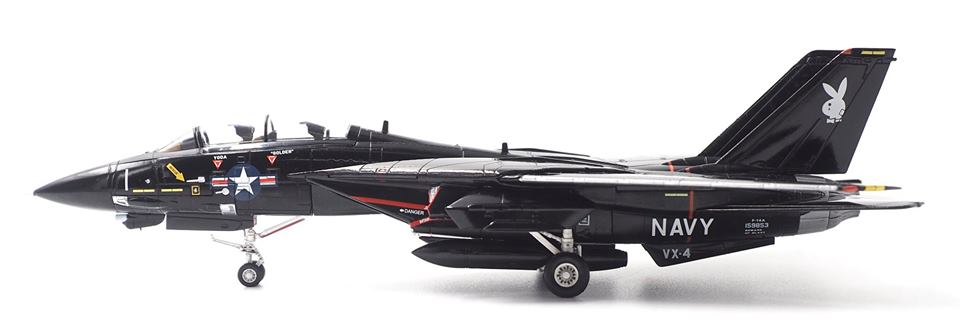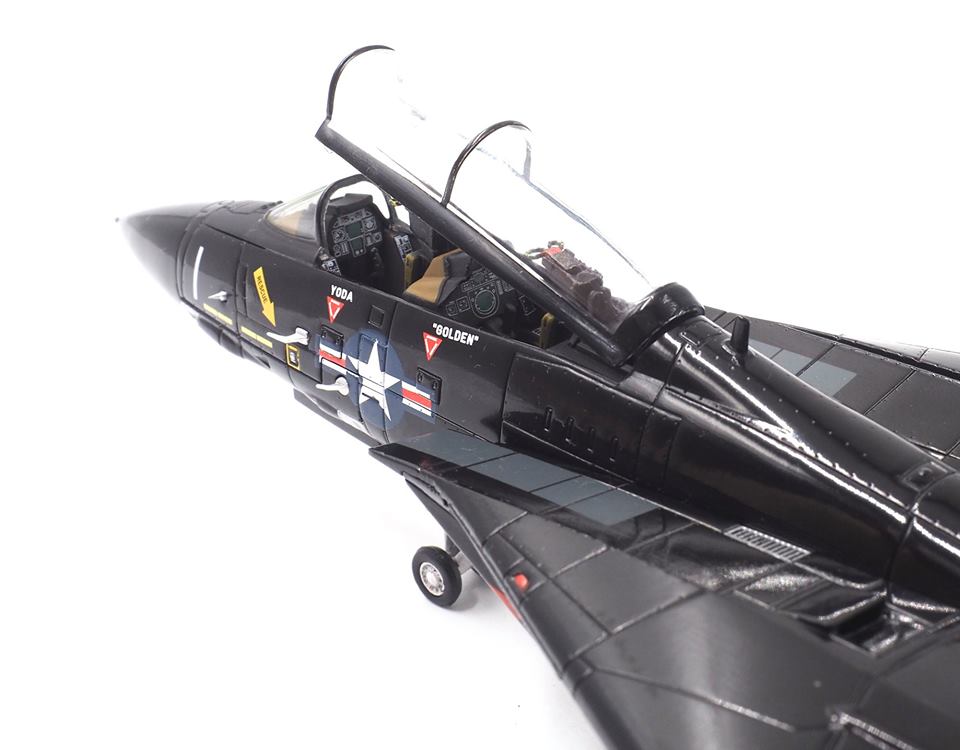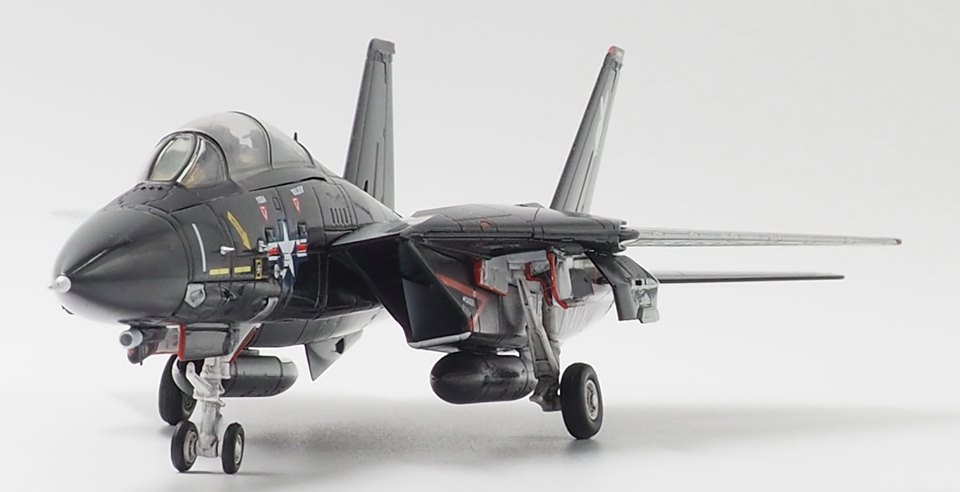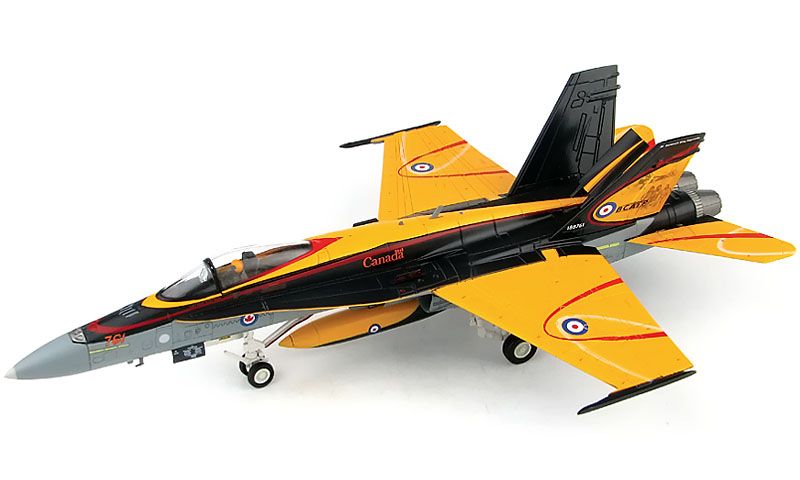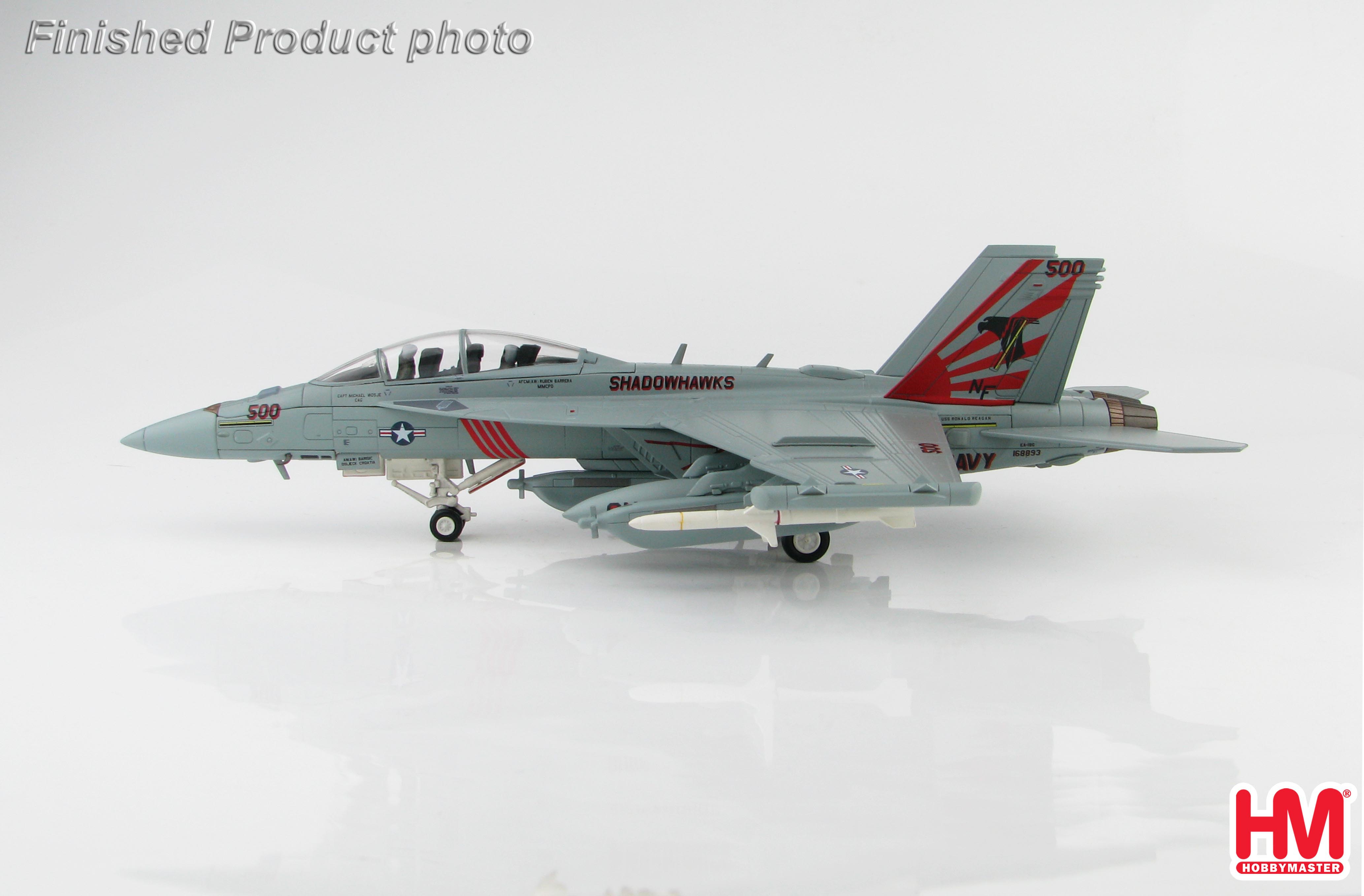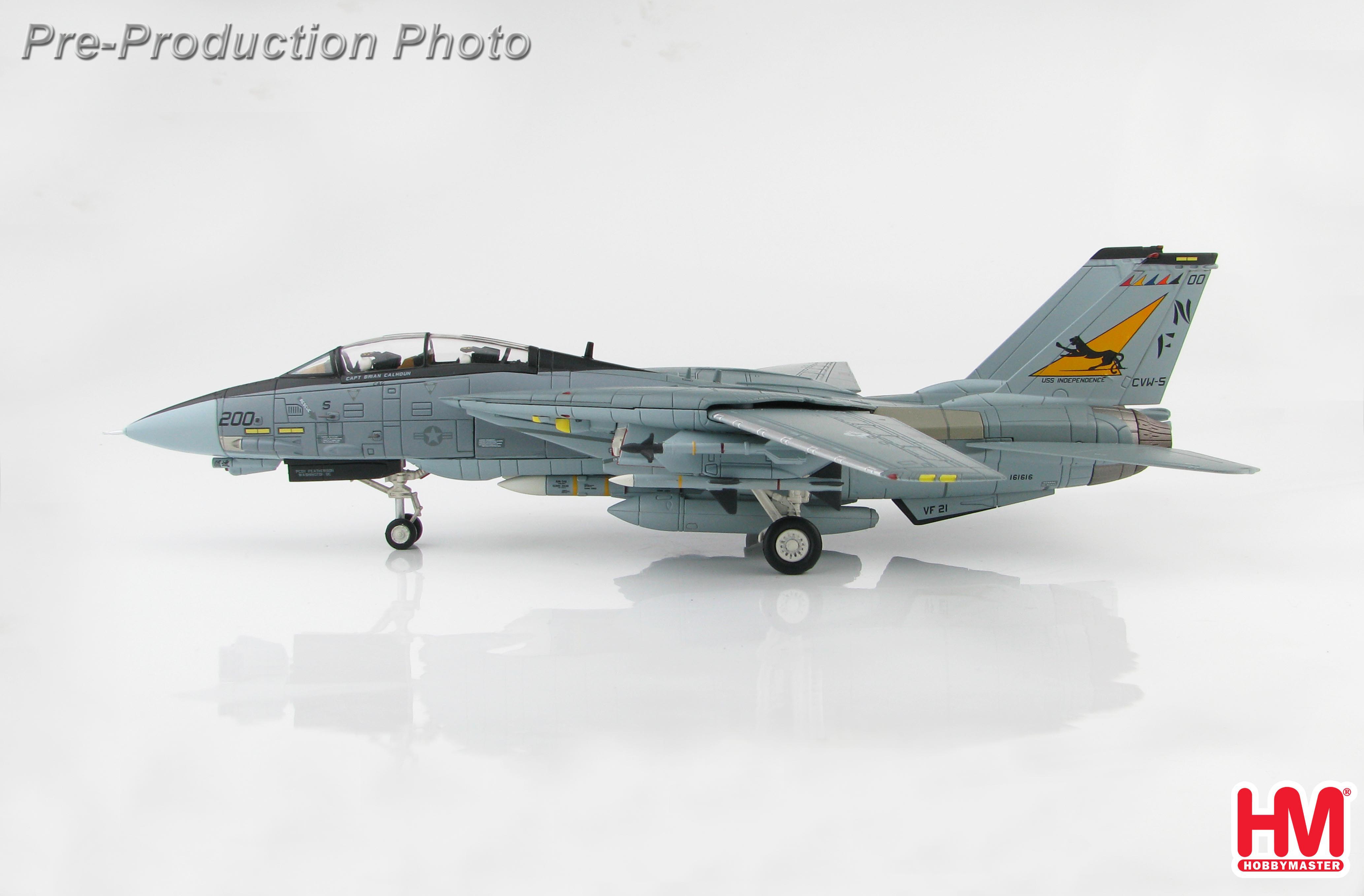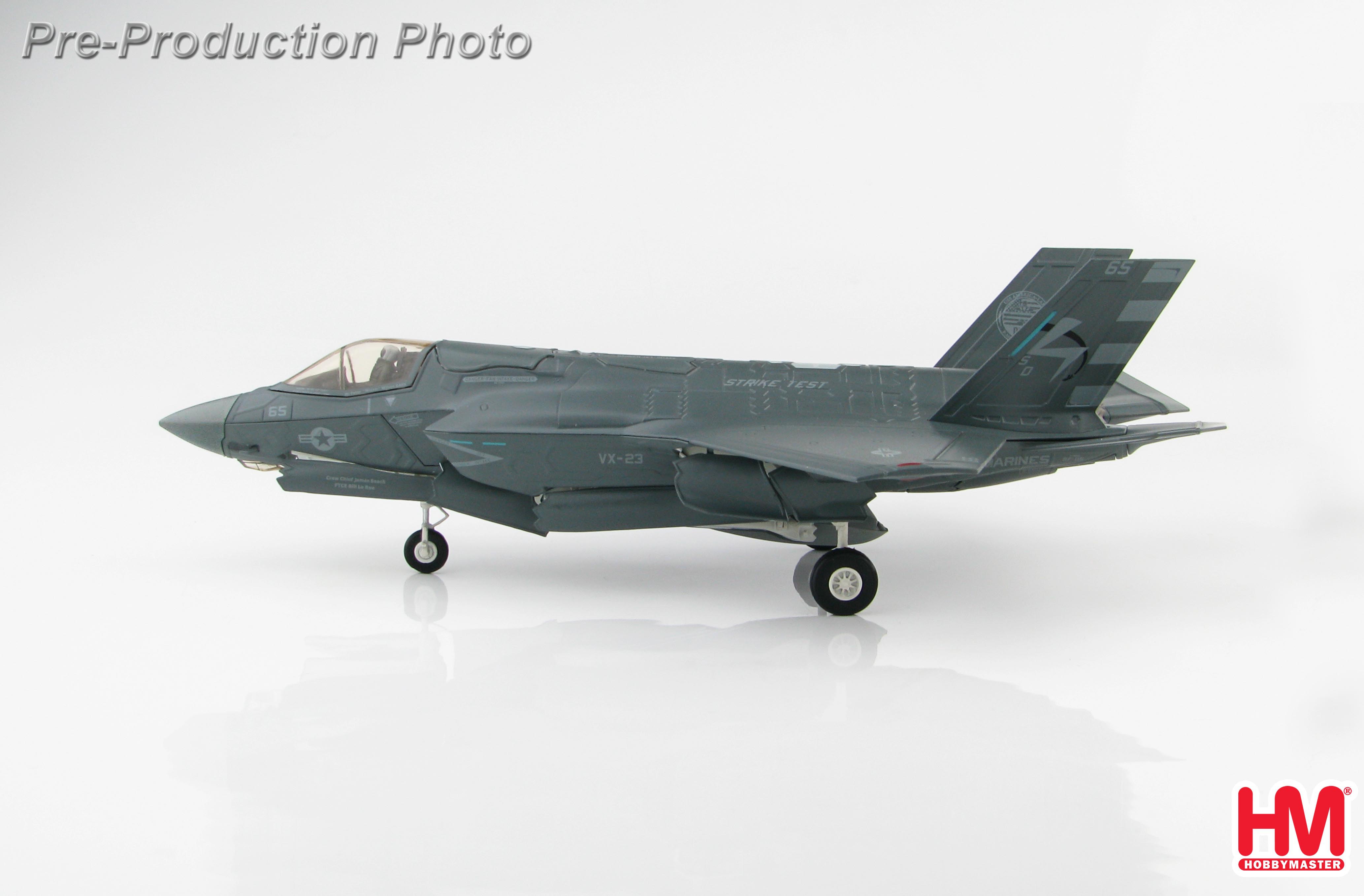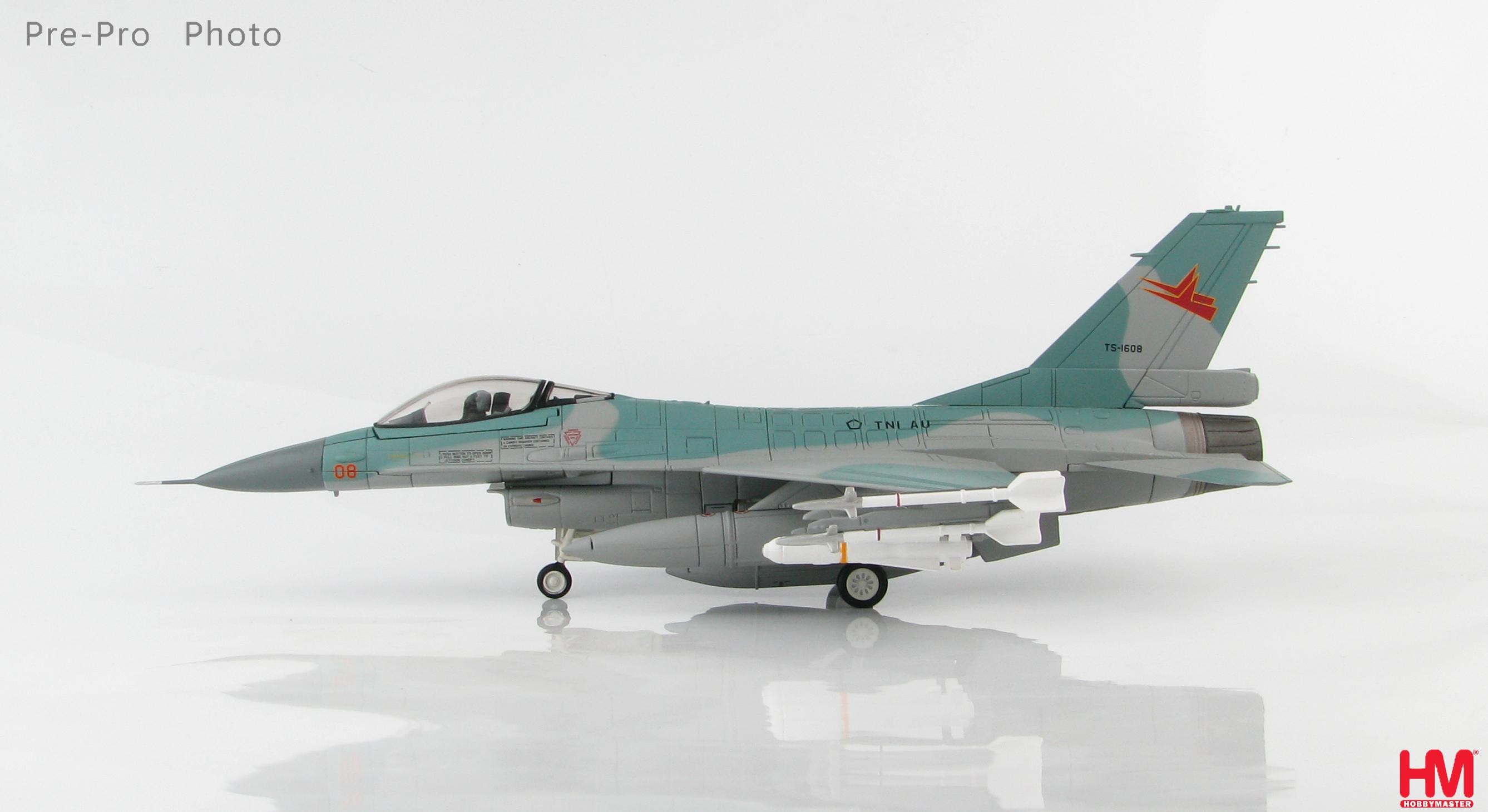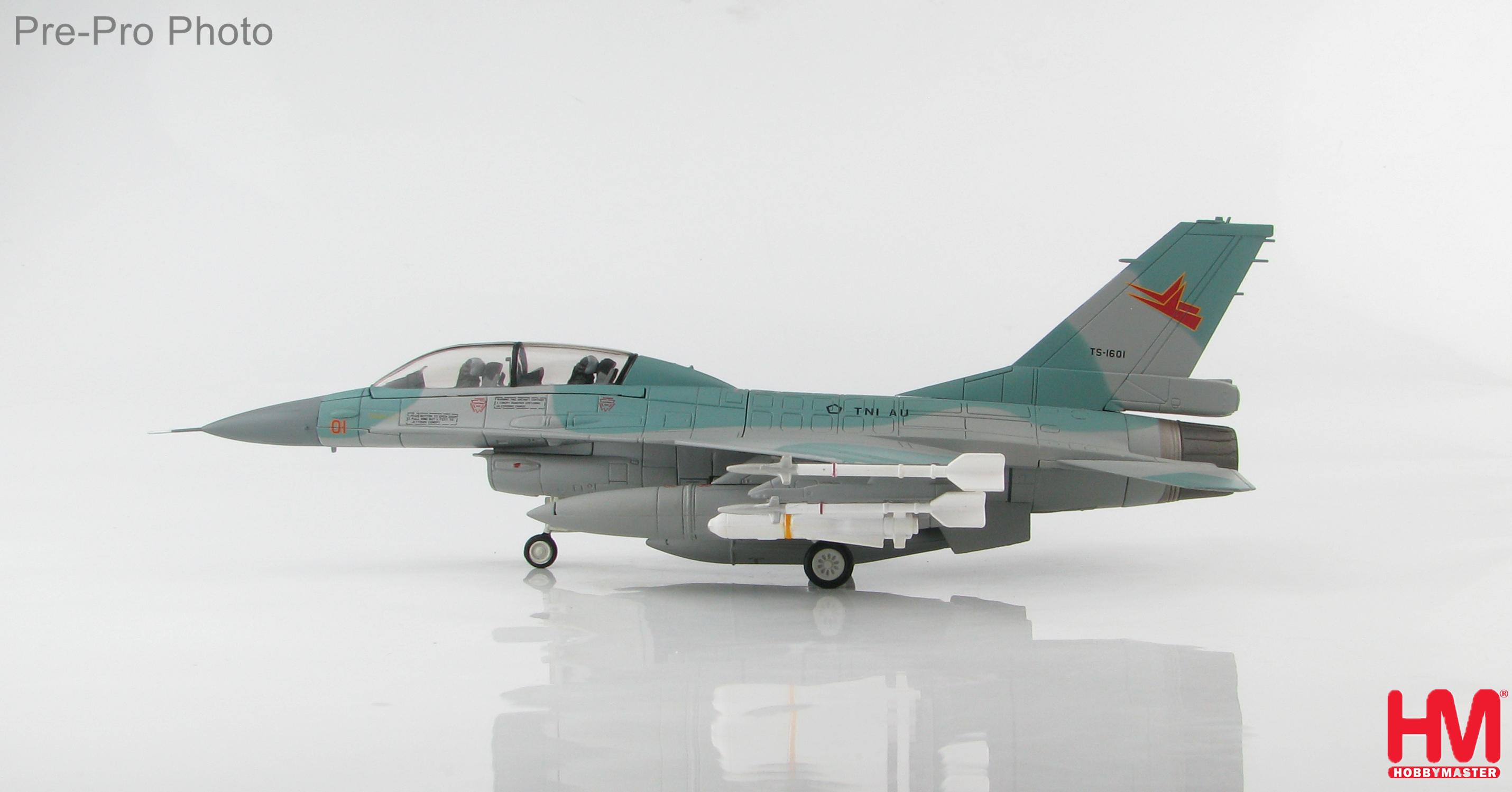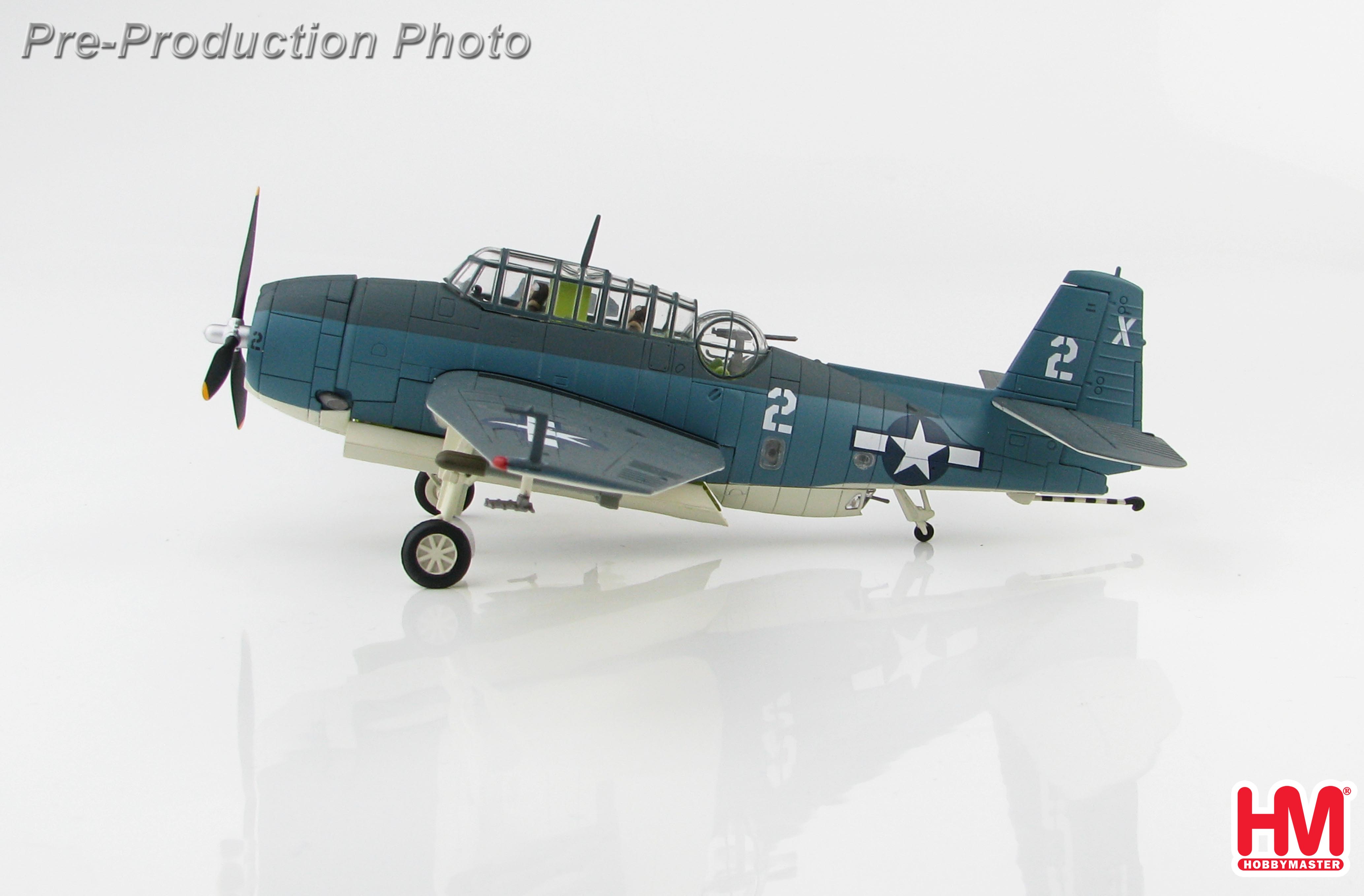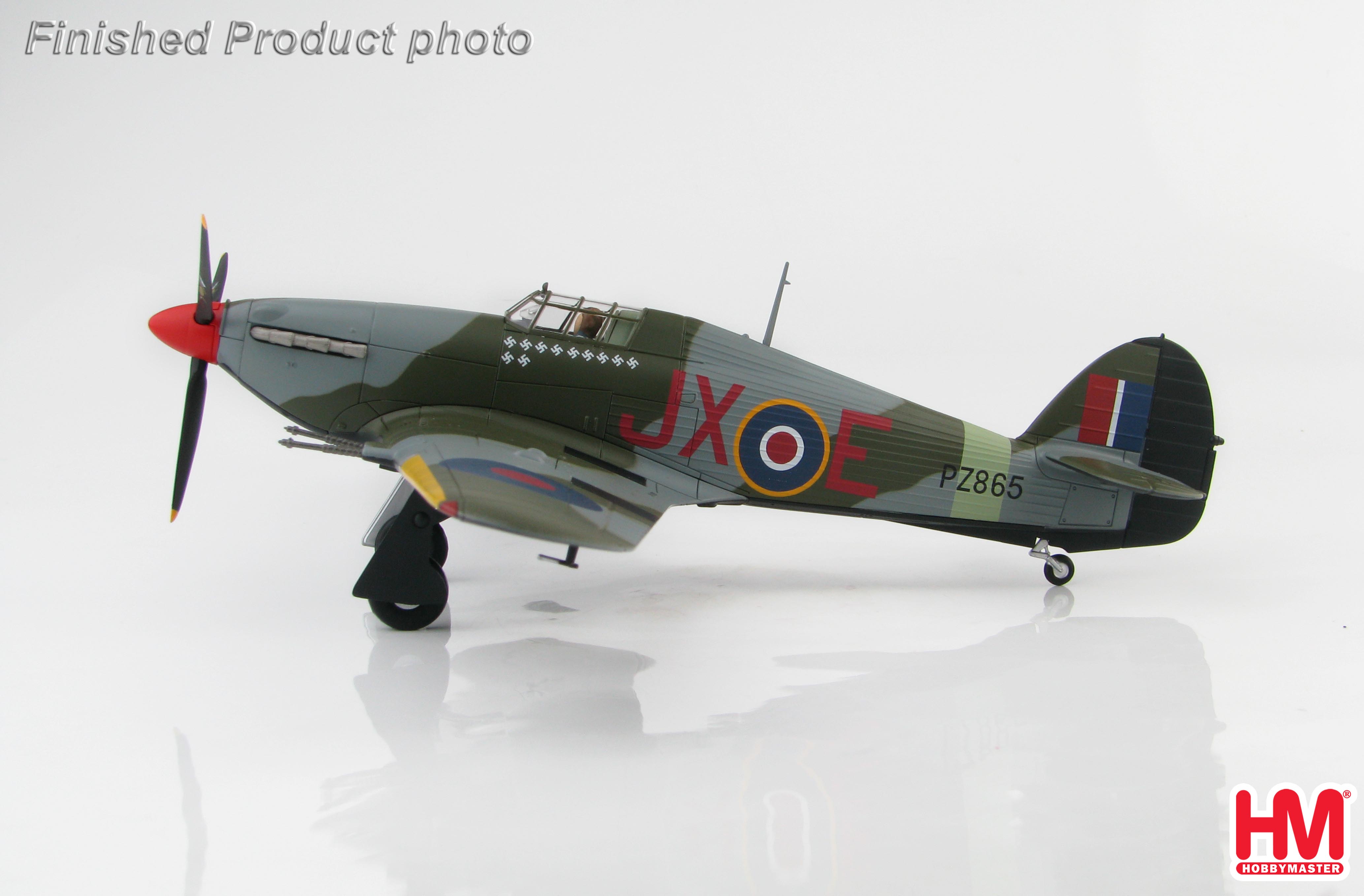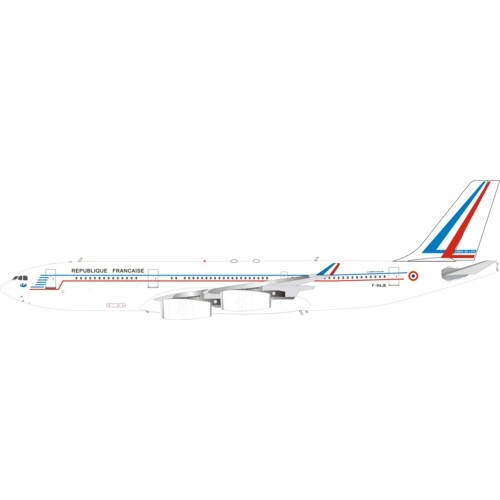
Grumman F-14A Tomcat USN VX-4 Evaluators, Vandy 1 / Black Bunny
VX-4, Air Test and Evaluation Squadron Four, (AIRTEVRON FOUR), commonly referred to by its nickname, The Evaluators) was a United States Navy air test and evaluation squadron based at Naval Air Station Point Mugu, California. Their tail code was XF, and they flew the McDonnell Douglas F-4 Phantom, Grumman F-14 Tomcat and the McDonnell Douglas F/A-18 Hornet until their disestablishment in 1994.

VX-4 Evaluators Miramar Detachment Douglas built radar equipped PB-1W Fortress BuNo 77237, XD-1, (Former USAAF s/n 44-83874), February/March 1950. Official U.S. Navy photo.
There were two squadrons which used the designation VX-4. The first was established in 1946 as Experimental and Development squadron Four at NAS Quonset Point equipped with PB-1Ws to evaluate and develop Airborne Early Warning equipment and procedures. In 1950 it relocated to NAS Atlantic City as Air Development Squadron four. The squadron moved to NAS Patuxent River in 1951 where it was disestablished later the year due to the lapse of assigned projects.
The second squadron to carry the VX-4 designation was established in 1952 at NAS Point Mugu to conduct evaluations of air-launched guided missiles as assigned by the Commander, Operational Test and Evaluation Force. That squadron is the subject of this article.
In 1960 the squadron began to include additional projects that were not associated with guided missiles. Projects such as the operational test and terrain clearance radar, Doppler navigation systems, and air-to-air distance measuring equipment were included in the squadron’s tasks.

Chance Vought F7U-3 Cutlass VX-4
VX-4 flew aircraft that were currently in operational service with the US Navy, and began their life with the Chance Vought F7U Cutlass. Later they transitioned to the McDonnell Douglas F3D Skyknight, redesignated F-10. With the AIM-7 Sparrow missile being used, the North American FJ Fury, Douglas A-4 Skyhawk and the McDonnell F3H Demon replaced the Cutlass and the Skynight.

The F3D Skyknight
When the AIM-9 Sidewinder came about, the F-8 Crusader was introduced to VX-4, and in the early 1960s the F-4 Phantom II made its debut with VX-4. In the early 1970s the F-14A Tomcat arrived and when the F/A-18 Hornet came to the fleet, it appeared with VX-4 as well, plus newer variants of the F-14 Tomcat.

F-8E Crusader 1969
Operational tests and evaluation of airborne fighter weapons systems included the AIM-7 Sparrow, AIM-9 Sidewinder and the AIM-54 Phoenix missiles as well as radar warning devices and self-protection jammers.
January 1990 marked the end of the F-4 Phantom after nearly three decades of service with VX-4 and a few months later the F-14D Super Tomcat arrived. Also the same year they supervised the first operational test of the F-14D and the T-45 Goshawk. Throughout the year VX-4 developed tactics for the ALR-67 radar warning receiver and contributed the system’s incorporation in the F-14. VX-4 also began developing tactics for the employment of the AIM-120 AMRAAM missile.

F-4J Phantom 153783 of VX-4 XF-1
After Iraq’s invasion of Kuwait in August 1990 and the Gulf War in 1991, VX-4 was instrumental in the identification of deficiencies, testing and fielding of fixes to fighter weapons systems during Desert Shield, Desert Storm and subsequent operations in Southwest Asia. After Desert Storm commenced in January 1991, VX-4 continued to funnel the latest information to the fleet via messages and briefings presented by VX-4 aircrews deployed aboard carriers in the Red Sea and northern Arabian Sea.
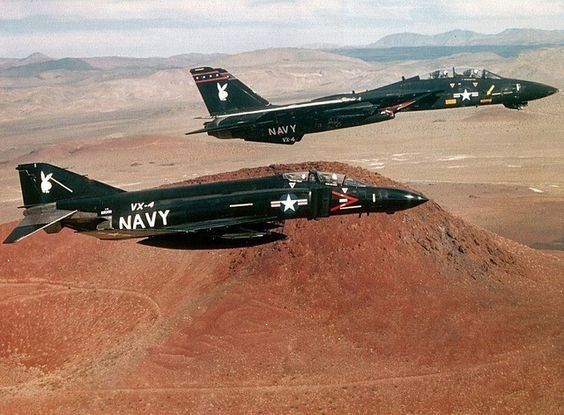
VX-4 test and evaluation squadron flying “Vandy One” F-4J Phantom and F-14A Tomcat.
After Desert Storm, the tempo at VX-4 returned to a more normal pace. AMRAAM testing aboard F/A-18, which began in 1991 and continued throughout the year. Evaluation of the F-14D, that had begun in 1990, likewise continued. Other 1991 projects included testing the Swedish BOL chaff dispenser on the F-14, various Sidewinder, Sparrow and Phoenix missile evaluations and Infra-red search and track set tests on the F-14D. ALR-67 (ECP-510) testing in the F/A-18 was one of the squadron’s more significant projects in late 1991 and 1992. AMRAAM testing was finally completed in early 1994.

Warrior Aviation L-39 “Vandy 1”
By late 1993, Hornet testing was winding down at VX-4 and preparations were underway for the transfer of all F/A-18 projects and F/A-18C/D aircraft to VX-5 at China Lake as an initial step in the consolidation of the two squadrons. The first Hornet departed for China Lake before the end of 1993, with the remainder of the squadron’s aircraft following in early 1994. On 30th September 1994, VX-4 was disestablished and its assets were reassigned to VX-9 (Detachment Point Mugu) Vampires.
Naval Air Station Point Mugu

NAS Point Mugu
Naval Air Station Point Mugu is a former United States Navy air station that operated from 1942 to 2000 in California. In 2000, it merged with nearby Naval Construction Battalion Center Port Hueneme to form Naval Base Ventura County (NBVC).
At Point Mugu, NBVC operates two runways and encompasses a 36,000 square mile sea test range, anchored by San Nicolas Island. The range allows the military to test and track weapons systems in restricted air- and sea-space without encroaching on civilian air traffic or shipping lanes. The range can be expanded through interagency coordination between the U.S. Navy and the Federal Aviation Administration. Telemetry data can be tracked and recorded using technology housed at San Nicolas Island, Point Mugu and Laguna Peak, a Tier 1 facility also controlled by NBVC.

The YF-4J Phantom II prototype from VX-4, painted with a USA bicentennial theme
The facility in Point Mugu, California, started as a United States Navy anti-aircraft training center during World War II and was developed in the late 1940s as the Navy’s major missile development and test facility. This facility was the site where most of the Navy’s missiles were developed and tested during the 1950/1960 era, including the AIM-7 Sparrow family and the AIM-54 Phoenix air-to-air, Bullpup air-to-surface, and Regulus surface-to-surface missiles.
Pt. Mugu has dominated the area since the 1940s, and is one of the few places in the area that is not agricultural. The base has been home to many ordnance testing programs, and the test range extends offshore to the Navy-owned San Nicolas Island in the Channel Islands.
In 1963 the U.S. Navy Marine Mammal Program was established on a sand spit between Mugu Lagoon and the ocean. The facility was relocated in 1967 to Point Loma in San Diego, California.

An underside view of an Air Test and Evaluation Squadron 4 (VX-4) F/A-18C Hornet aircraft in-flight. VX-4 is testing and evaluating the AIM-120 advanced medium range air-to-air missile (AMRAAM). The Hornet is armed with eight AMRAAMs on four wing pylons and two on the fuselage. The Hornet also carries two AIM-9 Sidewinder missiles, one on each wing tip.
Point Mugu was the airfield used by former President Ronald Reagan during his presidency on visits to his Santa Barbara ranch. The airfield was used during the state funeral in 2004, as the place where the former President’s body was flown to Washington, D.C. to lie in state in the Capitol Rotunda. The body was flown to Point Mugu aboard presidential aircraft SAM 28000 two days later. Until the late 1990s, the base hosted Antarctic Development Squadron SIX (VXE-6), the squadron of LC-130s equipped to land on ice in Antarctica, to supply the science stations there. Now, the New York Air National Guard’s 109th Airlift Wing has assumed that responsibility.
In December 1988, the 146th Airlift Wing began moving from its home in Van Nuys to a new facility built on 204 acres of state-owned land adjacent to the Point Mugu facility. Known as Channel Islands Air National Guard Station, the annex was constructed at a cost of more than $70 million and was fully activated in April 1990. The 146th operates from the military airfield along with Navy and other federal aviation activities.

Grumman F-14 Tomcat of VX-4, Air Test and Evaluation Squadron Four, (AIRTEVRON FOUR),
Calibre Wings 1/72nd scale Grumman F-14A Tomcat USN VX-4 Evaluators, Vandy 1 / Black Bunny, NAS Point Magu, CA, 1985
Check out the latest Calibre Wings 1/72nd scale Tomcat available to pre-order from Flying Tigers. Please click on any of the links / photos below to go straight to the model page to order and more details.
Hobbymaster New model arrivals now in stock.
New Hobbymaster models have arrived this week and are available to order at Flying Tigers today. Limited stocks available !
Flying Tigers will also consolidate your orders to save on postage costs across all brands !
Please click on the images / links below to go to the model of your choice, or CLICK HERE to see them all .
InFlight 200 New Model Announcements
The latest InFlight 200 models have just been announced and are available to pre-order at Flying Tigers today. If you want any of these models it is always safer to pre-order as quantities are limited.
Don’t forget NO DEPOSIT necessary with Flying Tigers and if you order with your debit or credit card your payment is not taken until your model is available to dispatch.
Flying Tigers will also consolidate your orders to save on postage costs across all brands !
Thank you for reading this week’s Newsletter.
Richard.
Flying Tigers.

